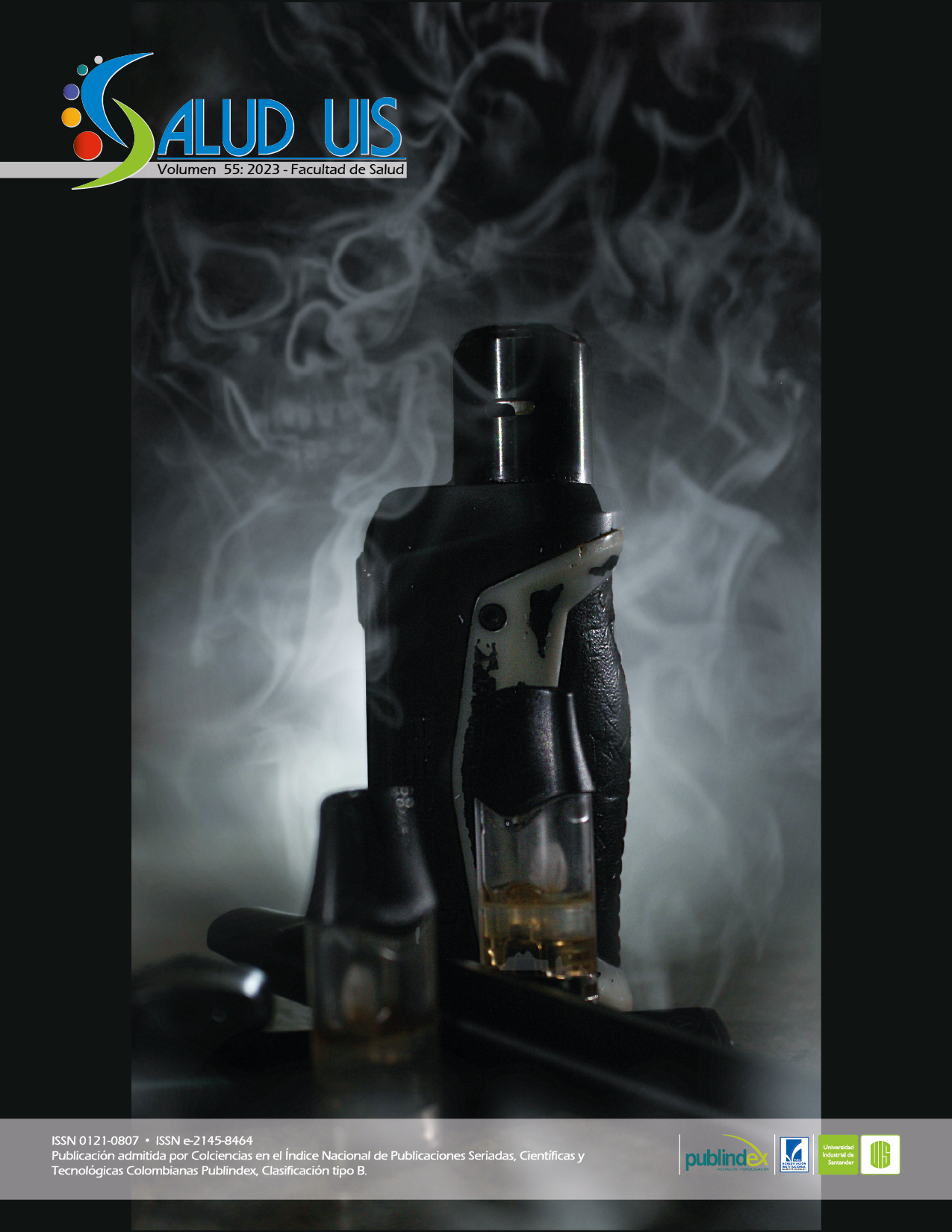Abstract
Introduction: Dysphagia results from several pathophysiological mechanisms where its symptoms are not static or homogeneous in people, especially when there is neurogenic oropharyngeal dysphagia. Objective: to know the perception and behavior over time of symptoms of dysphagia using the Eating Assessment Tool-10 (EAT-10) in patients with neurogenic oropharyngeal dysphagia to visualize the clinical dynamics of this form of dysphagia. Methodology: Observational cohort study in patients with neurogenic oropharyngeal dysphagia of neurological and neuromuscular causes with, follow-up at three and six months, and completion of the EAT-10 at baseline, third and sixth month. Results: A total of 90 people with baseline evaluation were included, of whom 56.7% (51/90) achieved follow-up at the third month and 25.6% (23/90) at the sixth month. Symptoms of dysphagia with greater self-perception at all three moments were difficulty swallowing solids, sensation of food stuck in the throat and coughing when eating. Odynophagia was not a commonly perceived symptom. The total score of the EAT-10 was between 16.61±9 and 18.1±9.5 points in general. In patients with complete follow-up, variation in self-perception of swallowing liquids and pills was observed. Variation of the score when adjusting for the reception of therapies. Discussion: Neurological and neuromuscular diseases directly impact swallowing with mild to profound severity, where self-perception of swallowing symptoms is dynamic, but with cardinal symptoms of oropharyngeal dysphagia over time. Conclusions: The recognition and monitoring of dysphagia symptoms should be usual aspects in the care of patients with neurological and neuromuscular diseases.
References
López-Liria R, Fernández-Alonso M, Vega-Ramírez FA, Salido-Campos MÁ, Padilla-Góngora D. Treatment and rehabilitation of dysphagia following cerebrovascular disease. Rev Neurol. 2014; 58(6): 259–267.
Leopold NA, Daniels SK. Supranuclear control of swallowing. Dysphagia [Internet]. 2010; 25(3): 250–257. doi: http://dx.doi.org/10.1007/s00455-009-9249-5
Miller AJ. The neurobiology of swallowing and dysphagia. Dev Disabil Res Rev [Internet]. 2008; 14(2): 77–86. doi: http://dx.doi.org/10.1002/ddrr.12
Warnecke T, Labeit B, Schroeder J, Reckels A, Ahring S, Lapa S, et al. Neurogenic Dysphagia: Systematic Review and Proposal of a Classification System. Neurology [Internet]. 2021; 96(6): 876–889. doi: http://dx.doi.org/10.1212/WNL.0000000000011350
Malandraki GA, Johnson S, Robbins J. Functional MRI of swallowing: from neurophysiology to neuroplasticity. Head & Neck [Internet]. 2011; 33(1): 14-20. doi: http://dx.doi.org/10.1002/hed.21903
Rommel N, Hamdy S. Oropharyngeal dysphagia: manifestations and diagnosis. Nat Rev Gastroenterol Hepatol [Internet]. 2016; 13(1): 49–59. doi: http://dx.doi.org/10.1038/nrgastro.2015.199
Suárez-Escudero JC, Rueda Vallejo ZV, Orozco AF. Disfagia y neurología: ¿una unión indefectible? Acta Neurol Col [Internet]. 2018; 34(1): 92–100. doi: http://dx.doi.org/10.22379/24224022184
Ickenstein GW, Höhlig C, Prosiegel M, Koch H, Dziewas R, Bodechtel U, et al. Prediction of outcome in neurogenic oropharyngeal dysphagia within 72 hours of acute stroke. J Stroke Cerebrovasc Dis [Internet]. 2012; 21(7): 569–576. doi: http://dx.doi.org/10.1016/j.jstrokecerebrovasdis.2011.01.004
Pfeiffer, R. Chapter 15: Neurogenic Dysphagia. En: Bradley’s Neurology in Clinical Practice (Daroff R, Jankovic J, Mazziotta J, Pomeroy S). New York: Elsevier Inc; 2016. p.148–157.
Altman KW, Richards A, Goldberg L, Frucht S, McCabe DJ. Dysphagia in stroke, neurodegenerative disease, and advanced dementia. Otolaryngol Clin North Am [Internet]. 2013; 46(6): 1137–1149. doi: http://dx.doi.org/10.1016/j.otc.2013.08.005
Marik PE. Aspiration Pneumonitis and Aspiration Pneumonia. N Engl J Med [Internet]. 2001; 344(9): 665–671. doi: http://dx.doi.org/10.1056/NEJM200103013440908
Cook IJ. Oropharyngeal dysphagia. Gastroenterol Clin North Am [Internet]. 2009; 38(3): 411–431. doi: http://dx.doi.org/10.1016/j.gtc.2009.06.003
Patel DA, Sharda R, Hovis KL, Nichols EE, Sathe N, Penson DF, et al. Patient-reported outcome measures in dysphagia: a systematic review of instrument development and validation. Dis Esophagus [Internet]. 2017; 30(5): 1–23. doi: http://dx.doi.org/10.1093/dote/dow028
Belafsky PC, Mouadeb DA, Rees CJ, Pryor JC, Postma GN, Allen J, et al. Validity and reliability of the Eating Assessment Tool (EAT-10). Ann Otol Rhinol Laryngol [Internet]. 2008; 117(12): 919–924. doi: http://dx.doi.org/10.1177/000348940811701210
Burgos R, Sarto B, Segurola H, Romagosa A, Puiggrós C, Vázquez C, et al. Translation and validation of the Spanish version of the EAT-10 (Eating Assessment Tool-10) for the screening of dysphagia. Nutr Hosp [Internet]. 2012; 27(6): 2048–2054. doi: http://dx.doi.org/10.3305/nh.2012.27.6.6100
Printza A, Kyrgidis A, Pavlidou E, Triaridis S, Constantinidis J. Reliability and validity of the Eating Assessment Tool-10 (Greek adaptation) in neurogenic and head and neck cancer-related oropharyngeal dysphagia. Eur Arch Otorhinolaryngol [Internet]. 2018; 275(7): 1861–1868. doi: http://dx.doi.org/10.1007/s00405-018-5001-9
Śledzik A, Szlendak P. Dysphagia in neurological disorders. Wiad Lek. 2020; 73(9): 1848–1852.
Cook IJ. Diagnostic evaluation of dysphagia. Nat Clin Pract Gastroenterol Hepatol [Internet]. 2008; 5(7): 393–403. doi: http://dx.doi.org/10.1038/ncpgasthep1153
Giraldo-Cadavid LF, Gutiérrez-Achury AM, Ruales-Suárez K, Rengifo-Varona ML, Barros C, Posada A, et al. Validation of the Spanish Version of the Eating Assessment Tool-10 (EAT-10spa) in Colombia. A Blinded Prospective Cohort Study. Dysphagia [Internet]. 2016; 31(3): 398–406. doi: http://dx.doi.org/10.1007/s00455-016-9690-1
Ciucci M, Hoffmeister J, Wheeler-Hegland K. Management of Dysphagia in Acquired and Progressive Neurologic Conditions. Semin Speech Lang [Internet]. 2019; 40(3): 203–212. doi: http://dx.doi.org/10.1055/s-0039-1688981
Kaspar K, Ekberg O. Identifying vulnerable patients: role of the EAT-10 and the multidisciplinary team for early intervention and comprehensive dysphagia care. Nestle Nutr Inst Workshop Ser [Internet]. 2012; 72: 19–31. doi: http://dx.doi.org/10.1159/000339977
Duncan S, Gaughey JM, Fallis R, McAuley DF, Walshe M, Blackwood B. Interventions for oropharyngeal dysphagia in acute and critical care: a protocol for a systematic review and meta-analysis. Syst Rev [Internet]. 2019; 8(1): 1-8. http://dx.doi.org/10.1186/s13643-019-1196-0
Gallegos C, Brito-de la Fuente E, Clavé P, Costa A, Assegehegn G. Nutritional Aspects of Dysphagia Management. Adv Food Nutr Res [Internet]. 2017; 81: 271–318. doi: http://dx.doi.org/10.1016/bs.afnr.2016.11.008
Ekberg O, Hamdy S, Woisard V, Wuttge-Hannig A, Ortega P. Social and psychological burden of dysphagia: its impact on diagnosis and treatment. Dysphagia [Internet]. 2002; 17(2): 139–146. doi: http://dx.doi.org/10.1007/s00455-001-0113-5
Zambran-Toledo N. Maintenance of logopedic orientation in a patient with oropharyngeal dysphagia of neurogenic origin. Rev Neurol. 2001; 32(10): 986–989.
Johnston BT. Oesophageal dysphagia: a stepwise approach to diagnosis and management. Lancet Gastroenterol Hepatol [Internet]. 2017; 2(8): 604–609. doi: http://dx.doi.org/10.1016/S2468-1253(17)30001-8
Logemann JA. Screening, diagnosis, and management of neurogenic dysphagia. Semin Neurol [Internet]. 1996; 16(4): 319–327. doi: http://dx.doi.org/10.1055/s-2008-1040990
Carucci LR, Turner MA. Dysphagia revisited: common and unusual causes. Radiographics [Internet]. 2015; 35(1): 105–122. doi: http://dx.doi.org/10.1148/rg.351130150
Shaker R. Oropharyngeal Dysphagia. Gastroenterol Hepatol. 2006; 2(9): 633–634.

This work is licensed under a Creative Commons Attribution 4.0 International License.
Copyright (c) 2023 Juan Camilo Suárez-Escudero, Lillyana Martínez-Moreno, Elizabeth Gómez-Ríos, Zulma Vanessa Rueda-Vallejo
